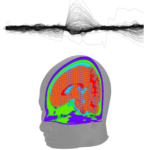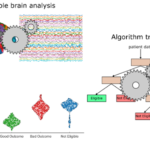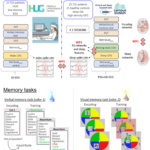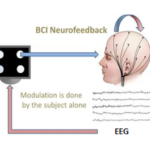Electrical Neuroimaging Analysis and Software
Description: The estimation of the neuronal generators that underlie the scalp potential distribution measured with high-density EEG requires sophisticated head models based on individual MRI and source models that incorporate the properties of the generation and propagation of the electric field. The laboratory develops these models and implements them in the academic software CARTOOL developed by Denis Brunet. Patients with atypical anatomical configurations, such as skull openings, irregular brain tissue distributions, or pathological electromagnetic profiles like tumors or epileptic foci, could benefit from more advanced lead field models. Improved models are expected to provide more accurate source localization in both general cases and in specific conditions like epilepsy.
Investigators: Serge Vulliémoz (UNIGE), Denis Brunet (UNIGE)
Collaborator: Armen Bagdasarov (Duke University), Fiorenzo Artoni (UNIGE)









